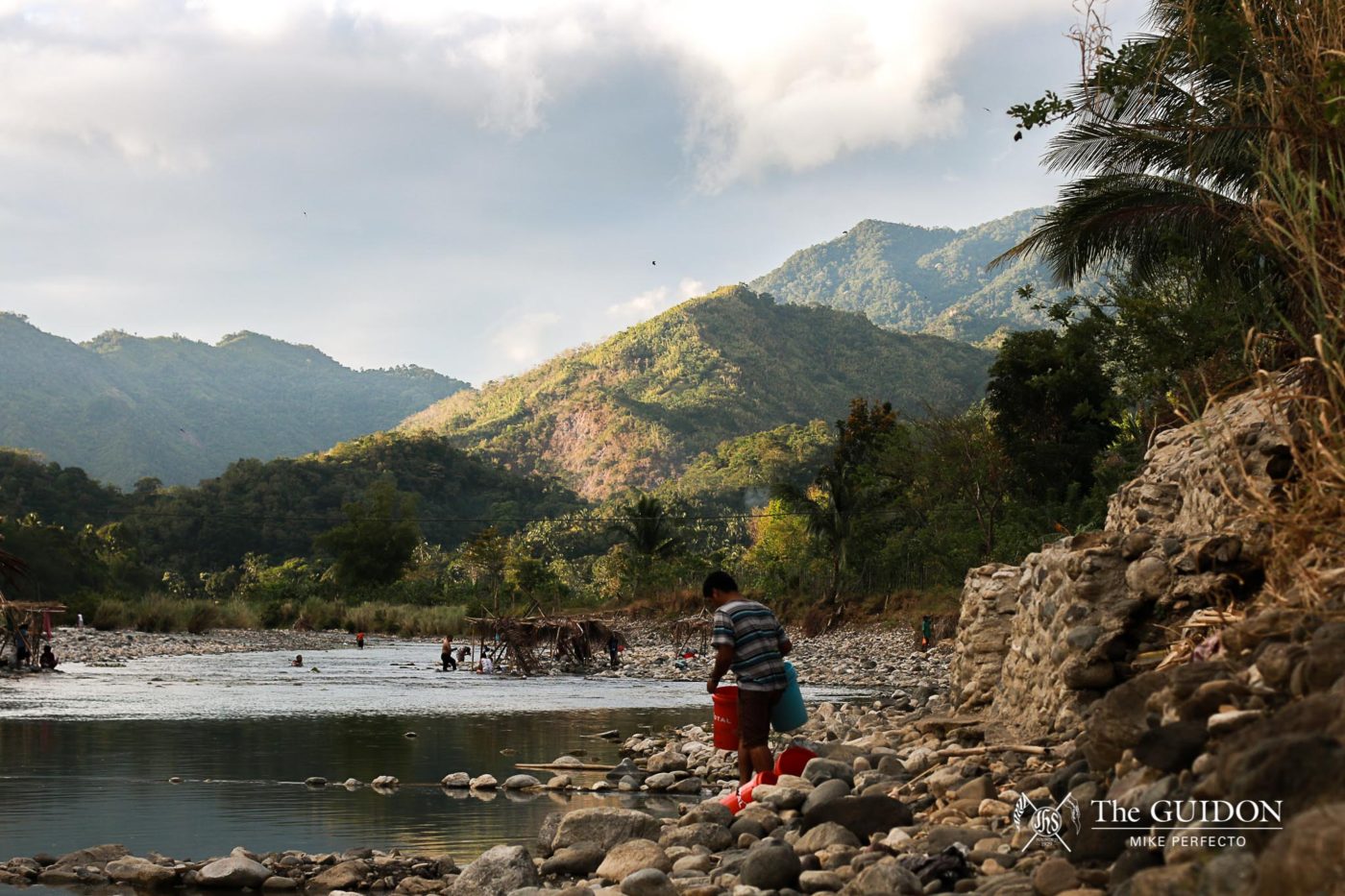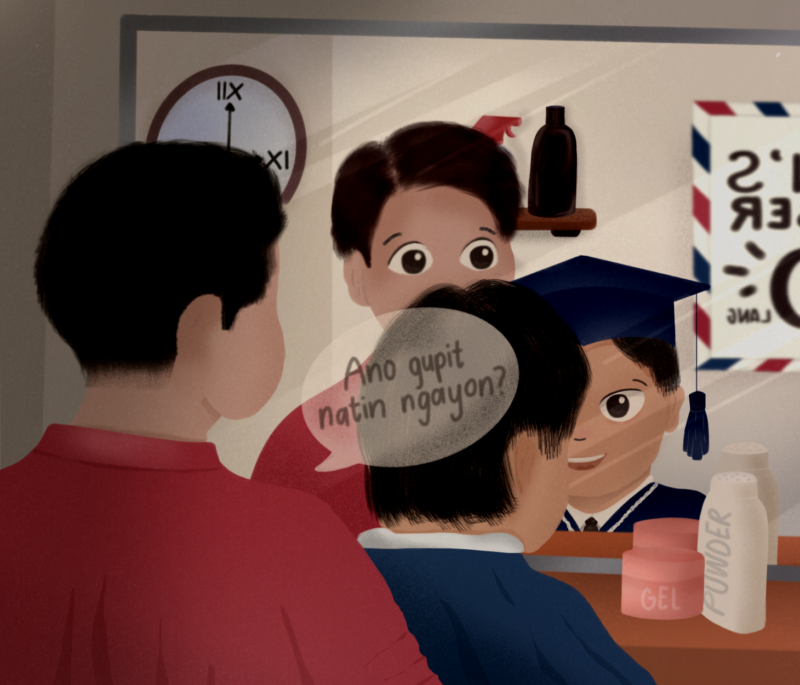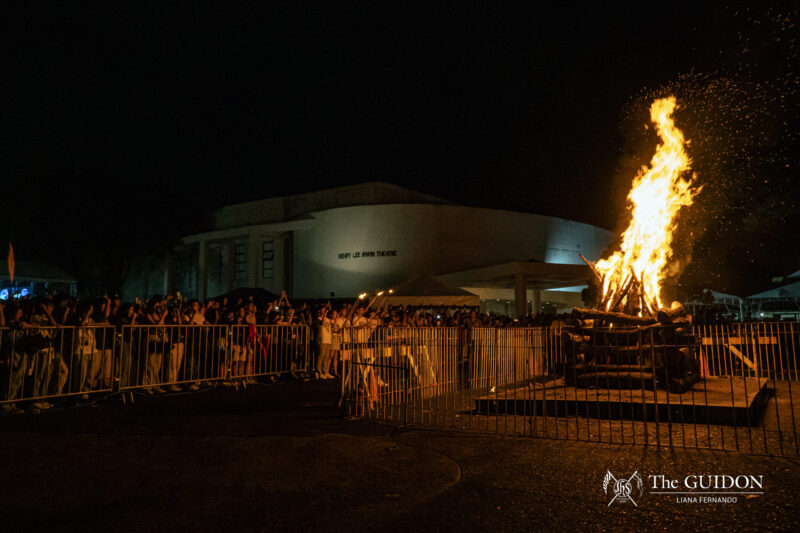SINCE THE 1970s, the Metropolitan Waterworks and Sewerage System (MWSS) has been attempting to pursue damming projects in the provinces of Rizal and Quezon, particularly in the Kaliwa-Kanan-Agos River Basin where the Kaliwa Dam is set to be constructed. The dam would serve as a solution to intermittent water shortages in Metro Manila.
For years, environmental advocates and indigenous peoples have lobbied against the construction of any dams in the area, blocking any proposed projects. Despite this, last November 20, the MWSS officially signed a loan agreement financed by the Export-Import Bank of China to fund the construction of the Kaliwa Dam portion of the New Centennial Water Source Project (NCWSP). The NCWSP is a system of two dams (Kaliwa Dam and Laiban Dam) which aims to meet the increasing demand for water in Metro Manila. Amounting to USD 211 million, with an interest rate of 2%, a management fee of 0.3%, and a commitment fee of 0.3% per annum, the loan will cover 85% of Kaliwa Dam’s total construction cost.
Some of the more controversial aspects of the agreement include a provision indicating that a Chinese contractor, China Energy Engineering Corporation Limited, has been preselected for the project. In a statement to Rappler, former Congressman Neri Colmenares expressed his disapproval of the loan agreement, stating, “This is a violation of our procurement laws, as well as [a] violation of the Constitution that mandates a preference for Filipino contractors and workers who are equally if not more than qualified.”
Environmental hazards
While the loan agreement raises concerns regarding its constitutionality, there are also environmental risks that conservation organizations such as the Haribon Foundation have pointed out. According to Haribon’s 2018 report, the Kaliwa Dam project is a threat to the ecological systems and rich biodiversity of the Sierra Madre mountain range. Based on their calculations, the dam’s construction will potentially destroy the habitat of at least three critically endangered species, 31 endangered species, and 240 vulnerable species.
Meanwhile, Center for Environmental Concerns (CEC) Research and Advocacy Coordinator Lia Alonzo mentioned concerns regarding the structural integrity of the Kaliwa Watershed. Citing CEC’s analysis of the National Economic and Development Authority’s feasibility study on the NCWSP, she explained that ensuring the longevity of Kaliwa Dam will require the construction of another large dam in the area. Since the ground surrounding the watershed will no longer be rooted in place by vegetation, it will have a tendency to gradually fall into the water, eventually filling the water basin in a process called sedimentation.
“Since the watershed is already degraded, upon operation there would be heavy sedimentation. It is expected that the dam would only function from 10 [to] 20 years due to sedimentation if the Laiban dam won’t be constructed,” Alonzo said.
In addition to the dams, the NCWSP also requires the construction of a 25 kilometer-long tunnel that will transport the collected water between the dams and treatment plants. As per the MWSS’s plans, the tunnel will be built underground, “[traversing through the] mountain areas of Tanay, Baras, [and] Teresa, Rizal,” further altering Sierra Madre’s natural landscape.
Thus, environmentalists such as Alonzo oppose not only the construction of the Kaliwa dam, but also its supporting infrastructure, such as the 25-kilometer pipeline and the secondary Laiban dam.
Indigenous peoples’ resistance
Besides being a threat to the ecological systems and biodiversity of the Sierra Madre Mountain Range, the damming project will also endanger the way of life of indigenous communities in the area. As such, Dumagat tribes have been vocal in their opposition of the Kaliwa Dam construction.
Research and Documentation Officer of Katribu Kalipunan ng Katutubong Mamamayan ng Pilipinas (Katribu) Joan Jamie expressed that the indigenous population is protesting against Kaliwa Dam because the structure will trample upon their ancestral domain—lands that the community considers to be both communal and sacred.
Jaime added that the planned construction of infrastructure on ancestral lands also raises the communities’ fear of relocation. According to Jaime, “Hindi ma-imagine ng mga Dumagat na mangyayari sa kanila na nandoon sila sa isang bahay na pare-pareho raw yung sukat (The Dumagat population cannot imagine the possibility of being placed in houses with the same dimensions).” This is to say that living in relocation sites, characterized by repetitive architecture and confined spaces, is unimaginable for the indigenous community who is accustomed to living in the natural landscapes of the Sierra Madre mountains.
The cultural identity of the Dumagat tribes, like many other indigenous peoples, is intrinsically linked to the land that they inhabit. Jaime explained that the indigenous community acts as stewards of their ancestral domain, relying on it for survival, food, and medicine, while protecting and preserving it for the good of future generations.
Jaime also pointed out the disconnect between business interests and the needs of the indigenous peoples. “Lahat na [lamang] nilagyan ng monetary value, at lahat na [lamang] pinagkakitaan. Contrary ‘yan doon sa pangangailangan ng mga mamamayan, pangangailangan ng mga katutubo, at yung tingin nilang [kumon na paggamit] sa lupa,” she said.
(All things are given a monetary value and profited from. This is contrary to the needs of the people, the needs of the indigenous communities, and the idea that land should be used for the common good.)
Alonzo agreed that the dam’s construction will interfere with the livelihood of the local community. As the dam redirects the flow of the river, upstream residences and sacred sites will be flooded, while lowland farming areas will no longer have adequate irrigation. The dam will also bar passage between bodies of saltwater and freshwater, cutting short the lifespans of migratory fish, which are essential in the diet of the indigenous community, and eventually causing extinction.
The ongoing fight
Despite protests, the government’s commitment to pursuing the Kaliwa Dam project as a solution to Manila’s water crisis seems to be set in stone. In the face of MWSS’s signed loan agreement and the project’s priority status as a part of President Rodrigo Duterte’s Build Build Build program, the project’s completion seems inevitable.
Yet, the government cannot begin construction without the free prior and informed consent (FPIC) of the local community, one of the documents required for the project to push through in accordance with Section 7c, Chapter III of The Indigenous Peoples’ Rights Act of 1997 or Republic Act 8371.
Jaime reported that heavy military presence has been deployed in the area, causing intimidation and confusion among the tribes. Aside from this, Special Citizen Armed Force Geographical Unit troops hired by the Chinese construction company were stationed in the area. These troops claimed that their presence is a security measure against possible New People’s Army activity. According to Jaime, these factors have made it difficult for the Dumagat leaders to give their genuine FPIC.
Faced with the Duterte administration’s determination to complete the construction of the Kaliwa Dam by 2022, environmental advocates and indigenous communities continue to protest against the project.
Alonzo and Jamie emphasized their groups’ desire for the government to take a deeper look into alternative solutions to Metro Manila’s water crisis. One of the alternatives recommended by Alonzo is mentioned in a review by the Advocates of Science and Technology for the People or Agham, which asserts that the utilization and maximization of existing water sources can supply the water demands of the whole of Metro Manila.
On Metro Manila’s contribution, Alonzo and Jaime agree that strong public opposition against the dam’s construction could be the deciding factor that will halt the process, as it did with the controversial Chico River Dam project set to be constructed in the Cordilleras in the 1980s.“Sa tingin namin, ang decisive talaga diyan ang mga tao (In our opinion, the decisive factor is the people’s opinion),” concluded Jaime.
Editor’s Note: The process of sedimentation is a natural result of dams restricting the flow of sediments in rivers. The MWSS has proposed the construction of a secondary dam to lengthen the time before sedimentation renders Kaliwa Dam completely inoperable. Neither the CEC nor Lia Alonzo endorse the construction of both dams due to the estimated resulting environmental damage as the article erroneously implied. We apologize for this oversight.




